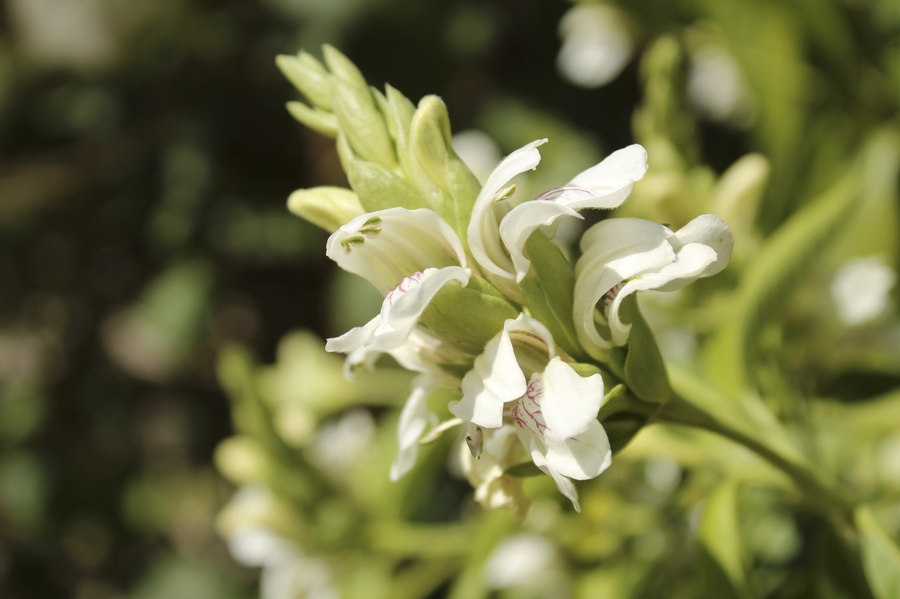Most of the plants that start with the letter J come from tropical climates or from Asia. There are a few North American native plants on this list, too. J is one of the least used letters in the alphabet, but that doesn’t mean there is a shortage of flowers that start with J!
From jaborosa to jungle flame, this list is packed with unique flowers that all have one thing in common; they all start with J! Keep reading to learn about some common and rare flowers that start with letter J.
List of Flowers that Start with J
- Jaborosa (Jaborosa spp.)
- Jacaranda mimosifolia (Black poui)
- Jackfruit (Artocarpus heterophyllus)
- Jack-in-the-pulpit (Arisaema triphyllum)
- Jack-bean (Canavalia spp.)
- Jacob’s ladder (Polemonium spp.)
- Jade plant (Crassula ovata)
- Jambosa (Syzygium jambos)
- Japanese anemone (Anemone hupehensis)
- Japanese bellflower (Campanula takesimana)
- Japanese cherry blossom (Prunus serrulata)
- Japanese iris (Iris japonica)
- Japanese kerria (Kerria japonica)
- Japanese rose (Rosa rugosa)
- Japanese snowbell (Styrax japonicus)
- Japanese toad lily (Tricyrtis hirta)
- Japanese tree lilac (Syringa reticulata)
- Jasione (Jasione spp.)
- Jasmine (Jasminum officinale)
- Jerusalem artichoke (Helianthus tuberosus)
- Jewelweed (Impatiens capensis)
- Jewel of desert peridot (Delosperma cooperi)
- Joe pye weed (Eutrochium purpureum)
- Johnny jump-up (Viola spp.)
- Joseph’s coat (Amaranthus tricolor)
- Jovellana (Jovellana violacea)
- Joyweed (Alternanthera brasiliana)
- Jungle flame (Ixora coccinea)
1. Jaborosa (Jaborosa spp.)
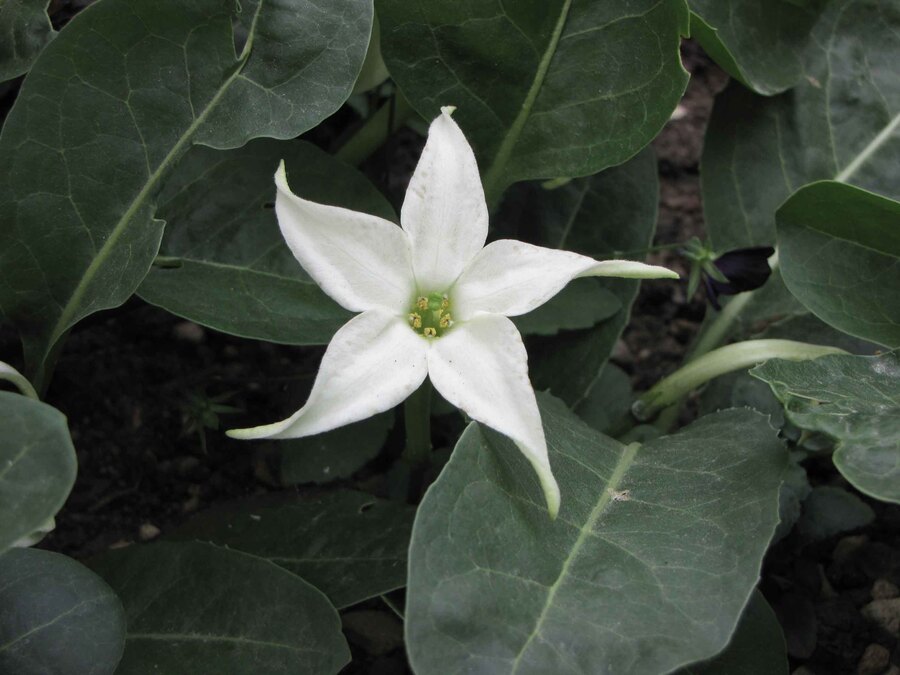
Jaborosa is native to South America and is most often found in and around the Andes. They are also referred to as nightshades and have flowers with long, tapered petals. With an estimated 20+ species, Jaborosa is rarely grown in North America.
- Type: Herbaceous perennial
- Water: Average
- Bloom Color: Creamy white
- Hardiness Zone(s): 8 to 10
- Bloom Time: Spring to early summer
- Mature Height (inches): up to 6
- Exposure: Full sun to part shade
- Uses: Containers, mixed borders
2. Jacaranda mimosifolia (Black poui)
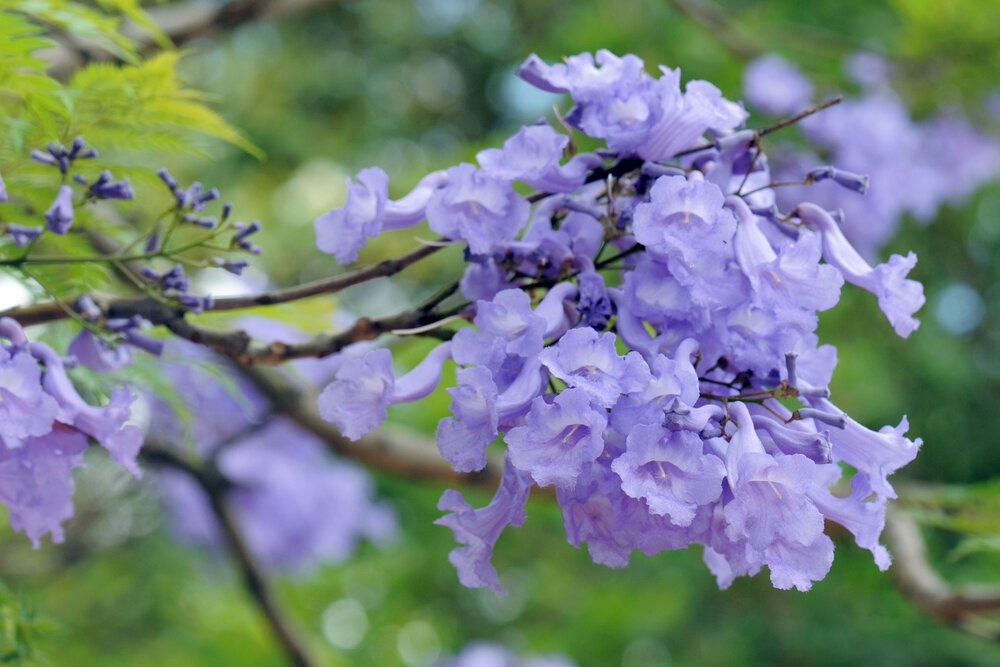
The glorious jacaranda thrives in the heat and humidity of warmer zones. It is native to tropical and subtropical regions, namely Argentina and Bolivia. While it has eye-catching purple blooms in late summer, it is usually grown for its foliage.
- Type: Tree
- Water: Keep moist
- Bloom Color: Purple
- Hardiness Zone(s): 10 to 11
- Bloom Time: Late summer
- Mature Height (feet): 25 to 50
- Exposure: Full sun
- Uses: Does best in sandy, well-drained soils
3. Jackfruit (Artocarpus heterophyllus)
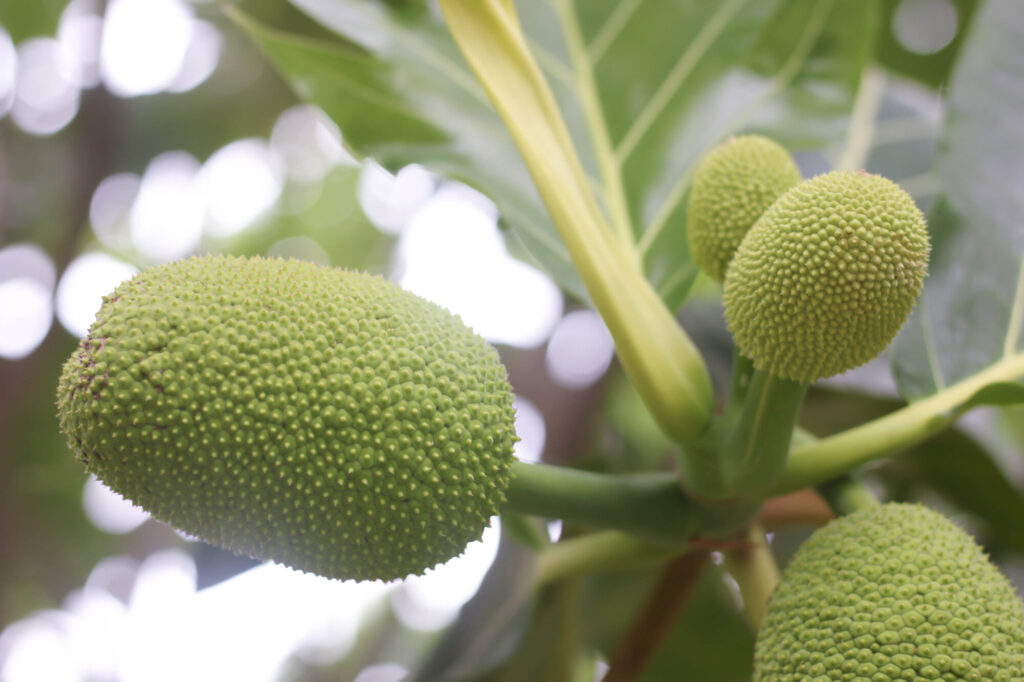
Jackfruit is a tree that is grown in tropical locations and is native to India. Its prized fruit is the largest of any tree in the world. The fruits have bumpy skins and can contain up to 500 seeds! The dramatic flowers have a fittingly tropical appearance and bloom at different times, depending on the climate.
- Type: Broadleaf evergreen
- Water: Average
- Bloom Color: Green
- Hardiness Zone(s): 10 to 12
- Bloom Time: Summer
- Mature Height (feet): 30 to 70
- Exposure: Full sun
- Uses: Year-round interest
4. Jack-in-the-pulpit (Arisaema triphyllum)
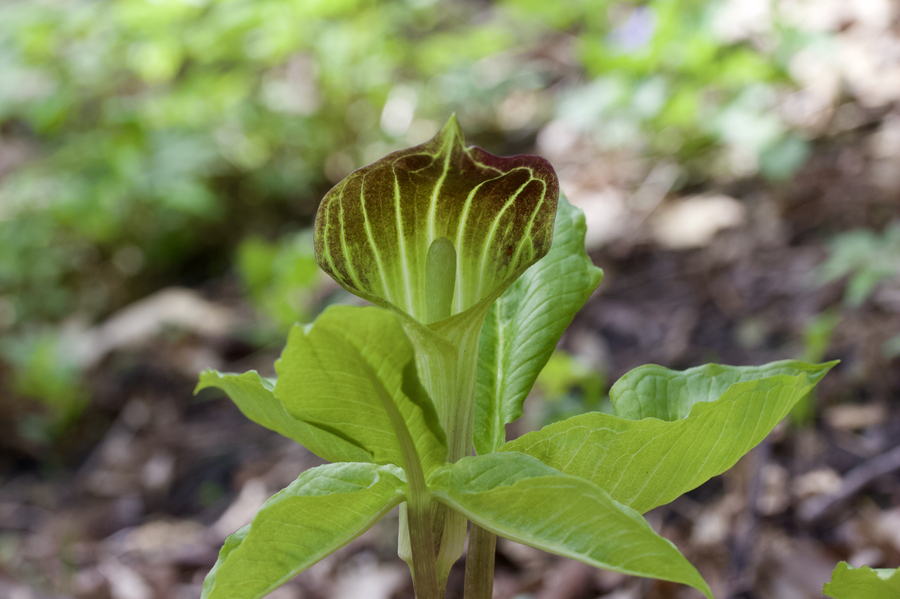
This North American native can be found in woodlands and other boggy locations. This plant will form colonies and then go into dormancy in summer. Its unique flowers create a hood that hovers over its spadix (flower structure).
- Type: Herbaceous perennial
- Water: Average to moist
- Bloom Color: White-green, purple-toned
- Hardiness Zone(s): 4 to 9
- Bloom Time: Spring
- Mature Height (feet): up to 2
- Exposure: Full shade to part shade
- Uses: Woodland gardens, rain gardens
5. Jack-bean (Canavalia spp.)

The jack-bean is a sand-loving and fast-growing plant with beautiful flowers that start with J. It was said to be an important food source for early European explorers. However, eating it is not recommended as its seeds are poisonous. This plant also has a spreading habit and is considered in areas outside of its native range.
- Type: Herbaceous perennial
- Water: Average to dry
- Bloom Color: Purple
- Hardiness Zone(s): 9 to 10
- Bloom Time: Summer
- Mature Height (inches): 12 to 18
- Exposure: Full sun to part shade
- Uses: Rain garden, near water, and in damp gardens
6. Jacob’s ladder (Polemonium spp.)
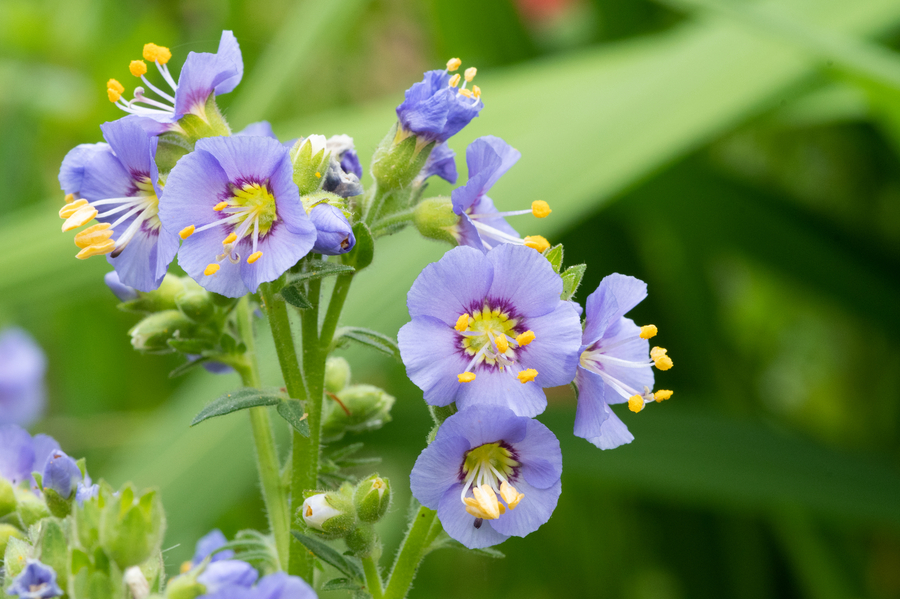
Jacob’s ladder is a delicate, North American native that grows in the east coast. Its showy purple flowers are deer resistant and tolerate black walnut. It grows naturally in woodland settings and along stream banks.
- Type: Herbaceous perennial
- Water: Keep soil moist
- Bloom Color: Purple
- Hardiness Zone(s): 3 to 8
- Bloom Time: Summer
- Mature Height (inches): 20-36
- Exposure: Part sun to part shade
- Uses: Borders, woodland gardens, and somewhat shaded parts of the garden
7. Jade plant (Crassula ovata)
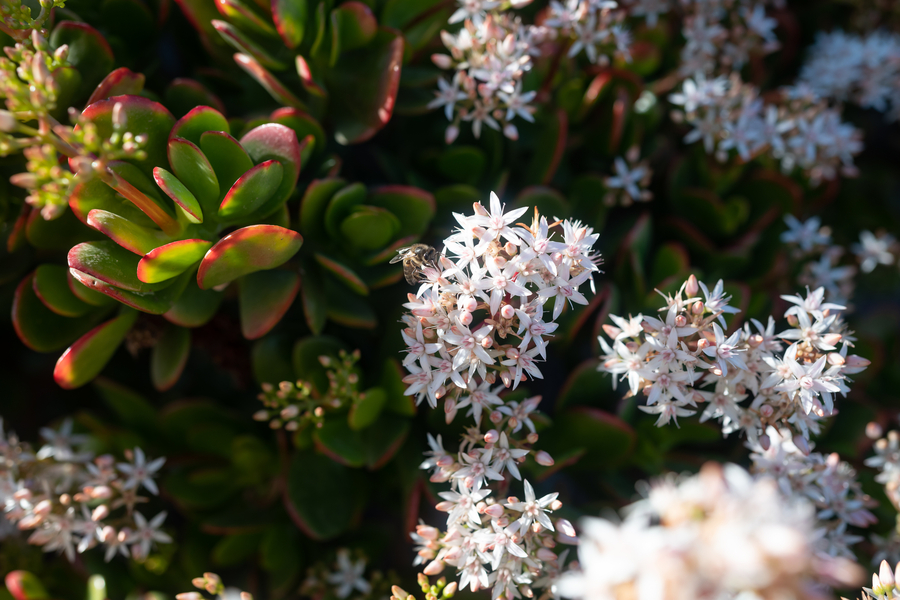
The jade plant is a succulent that is native to South America and grows in only two US zones. That being said, jade is most often grown as an indoor plant and can thrive under the right conditions. When it blooms it has lovely, delicate flowers.
- Type: Broadleaf evergreen
- Water: Average
- Bloom Color: White to pink
- Hardiness Zone(s): 11 to 12
- Bloom Time: Seasonal
- Mature Height (inches): 12 to 18
- Exposure: Part shade
- Uses: Containers
8. Jambosa (Syzygium jambos)
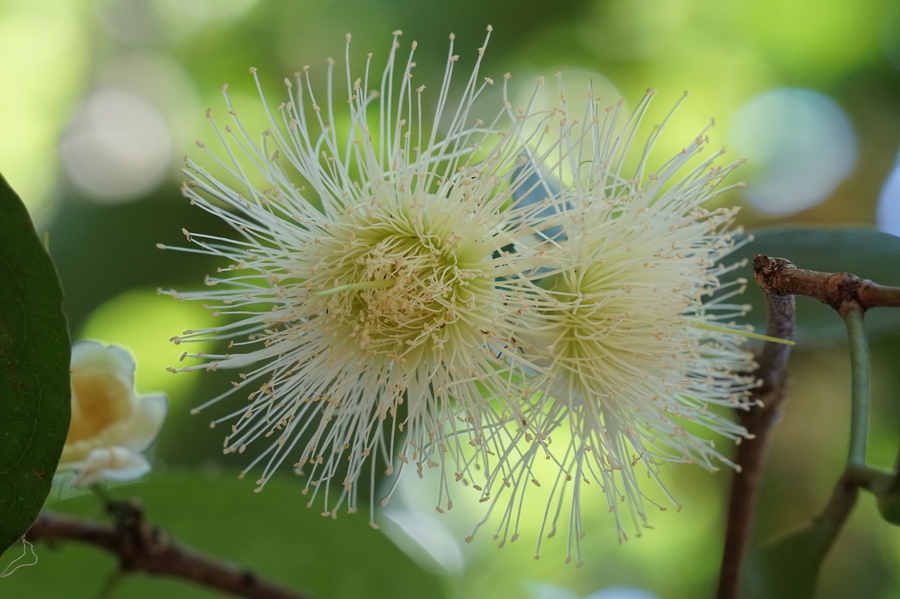
The jambosa is also referred to as the mountain apple for its resemblance to an upside-down apple. This tropical tree has dramatic, spiked flowers that attract hummingbirds. It is a fast grower in ideal conditions and will grow up to fifty feet tall.
- Type: Fruit tree
- Water: Average
- Bloom Color: Red or pink, occasionally white
- Hardiness Zone: 12
- Bloom Time: Seasonal
- Mature Height (feet): up to 50
- Exposure: Full sun
- Uses: Large gardens
9. Japanese anemone (Anemone hupehensis)
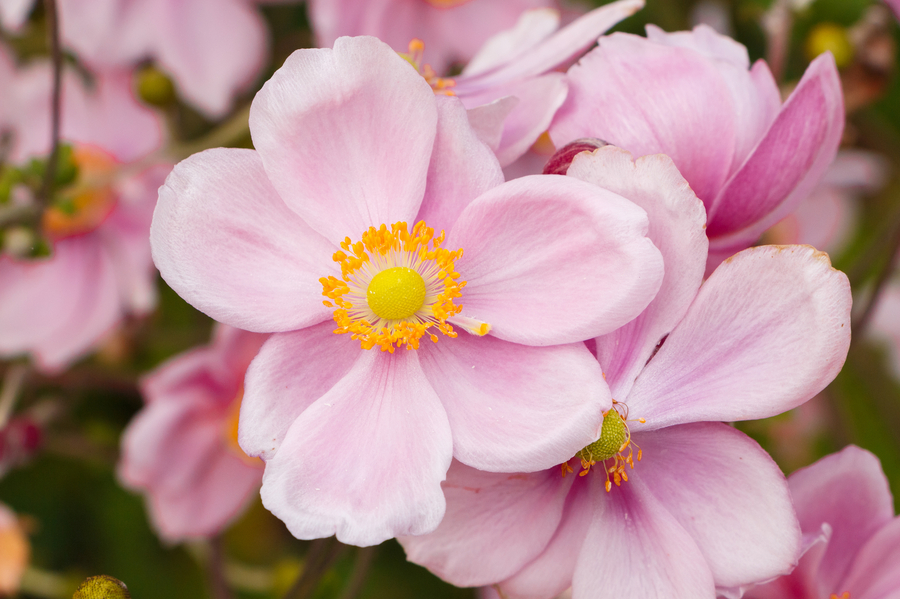
Japanese anemone grow best in rich, well-draining soils and in some shade. It will not survive excessive dry spells or overwatering, making it one of the more delicate flowers that start with a J. This plant spreads by its fibrous roots. It appreciates mulch in fall to keep its roots nourished and insulated in winter.
- Type: Herbaceous perennial
- Water: Average
- Bloom Color: Pink petals with a yellow center
- Hardiness Zone(s): 4 to 8
- Bloom Time: Late summer
- Mature Height (feet): 3 to 8
- Exposure: Full sun and part shade
- Uses: Borders, containers, and meadows
10. Japanese bellflower (Campanula takesimana)
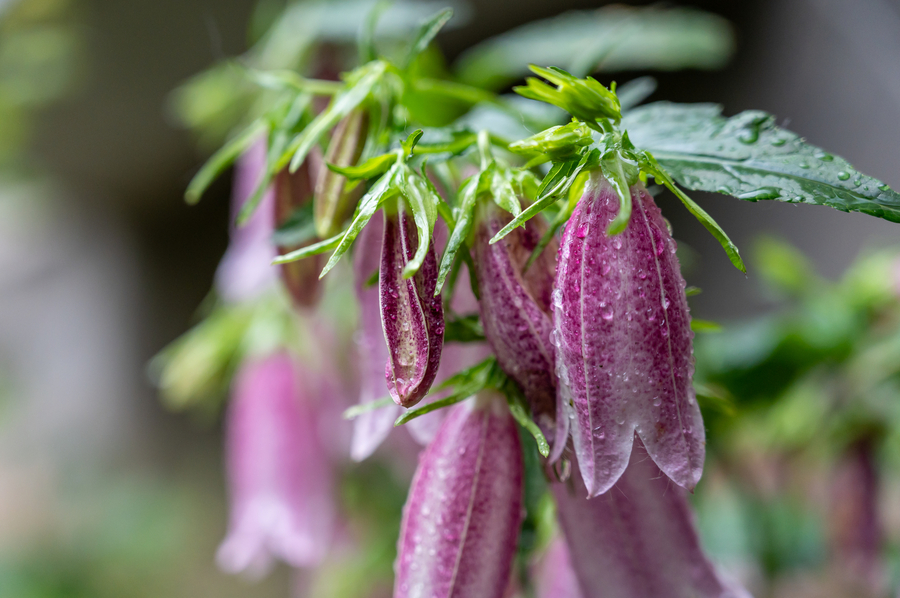
Japanese bellflower is claimed by both Japan and Korea but is native to Korea. It’s a vigorous spreader and propagates by rhizome. Every three or four years, it can be dug up and divided to create more plants.
- Type: Herbaceous perennial
- Water: Keep it moist in well-draining soil
- Bloom Color: Purple/pink
- Hardiness Zone(s): 5 to 8
- Bloom Time: Summer
- Mature Height (feet): up to 2
- Exposure: Full sun to part shade
- Uses: Borders
11. Japanese cherry blossom (Prunus serrulata)
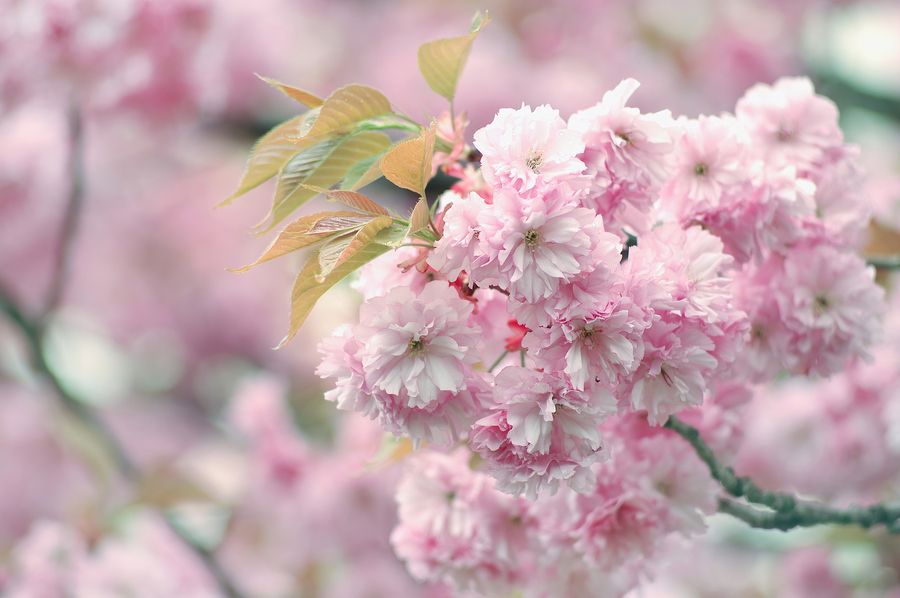
The Japanese cherry blossom is native to Asia. It can be grown in three US zones and is the most notable tree in Washington D.C. Some varieties have fruit while others don’t. Also, some varieties are fragrant. They are most valuable for their short-lived, yet impressive blooms. Florists are a fan of using their budding branches in flower arrangements.
- Type: Tree
- Water: Average
- Bloom Color: White to pink
- Hardiness Zone(s): 5 to 8
- Bloom Time: Spring
- Mature Height (feet): up to 25
- Exposure: Full sun
- Uses: Medium to large gardens
12. Japanese iris (Iris japonica)
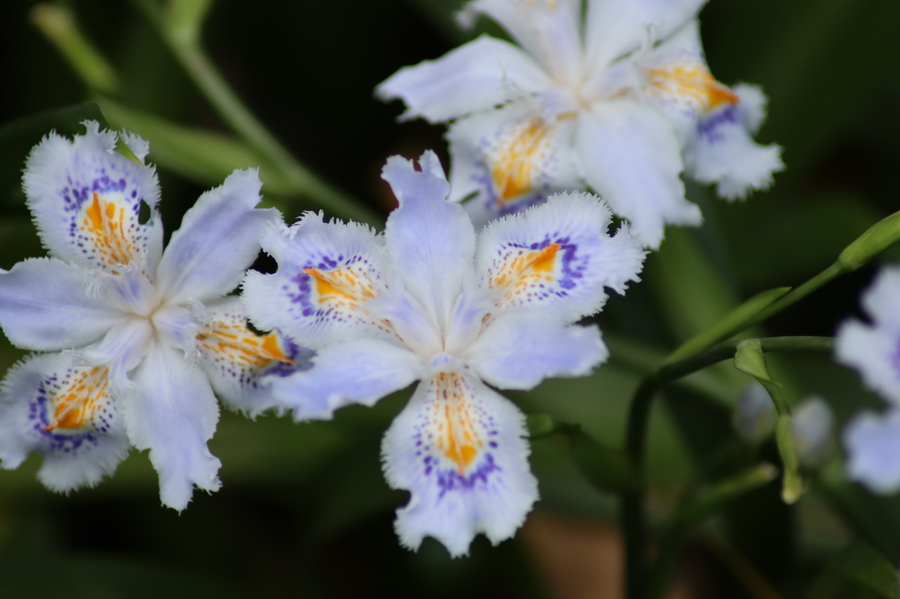
Native to tropical climates in Asia, the low-growing Japanese iris thrives in shade. It grows well near ponds or in woodland gardens. The plant spreads by rhizome and is easy to propagate once established. Simply dig up, divide in two, and replant.
- Type: Herbaceous perennial
- Water: Moist to average if in shade
- Bloom Color: Purple to white with pale yellow
- Hardiness Zone(s): 7 to 9
- Bloom Time: Spring
- Mature Height (inches): up to 12
- Exposure: Part shade
- Uses: Woodlands and shady parts of the garden
13. Japanese kerria (Kerria japonica)
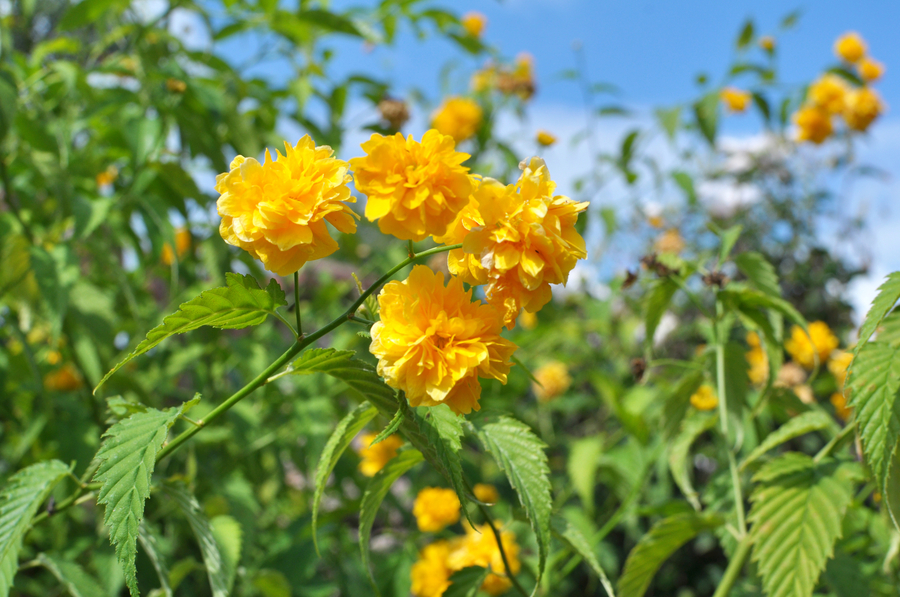
The Japanese kerria is a shrub that’s native to Asia. It is referred to as the Easter rose because it blooms during the Easter season. It is a hardy shrub that can tolerate a range of soil and sun conditions. It needs some shade so that its flowers won’t fade in the sun.
- Type: Deciduous shrub
- Water: Average in well-draining soil
- Bloom Color: Yellow
- Hardiness Zone(s): 4 to 9
- Bloom Time: Late spring
- Mature Height (feet): up to 5
- Exposure: Part shade
- Uses: Borders, hedges, and woodland edges
14. Japanese rose (Rosa rugosa)

The Japanese rose can tolerate a range of soils from sandy to clay. It thrives in full sun but can handle some shade. This fragrant plant is pollinator-friendly. It does best when it has good airflow and can be deadheaded to encourage further blooming.
- Type: Deciduous shrub
- Water: Average
- Bloom Color: White
- Hardiness Zone(s): 3 to 8
- Bloom Time: Summer
- Mature Height (feet): 4 to 6
- Exposure: Full sun to part shade
- Uses: Borders, hedges, and woodland edges
15. Japanese snowbell (Styrax japonicus)
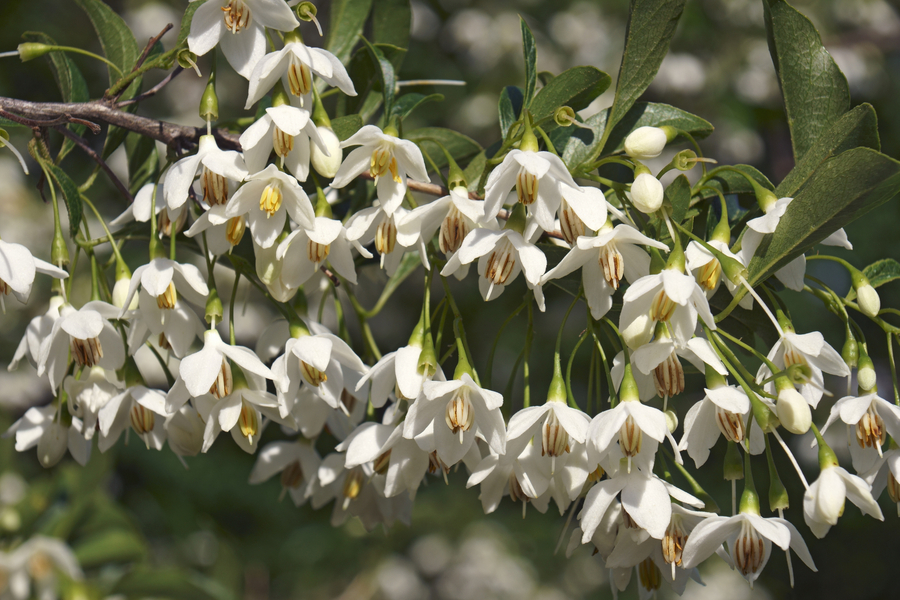
This flowering tree is dense and compact. When in bloom, the Japanese snowbell shows off drooping, white flowers. Its dark, green foliage lasts all season and will occasionally change color in fall. It can be pruned in late winter to maintain its uniform shape.
- Type: Tree
- Water: Average
- Bloom Color: White
- Hardiness Zone(s): 5 to 9
- Bloom Time: Summer
- Mature Height (feet): up to 30 feet
- Exposure: Full sun to part shade
- Uses: Medium to large gardens
16. Japanese toad lily (Tricyrtis hirta)
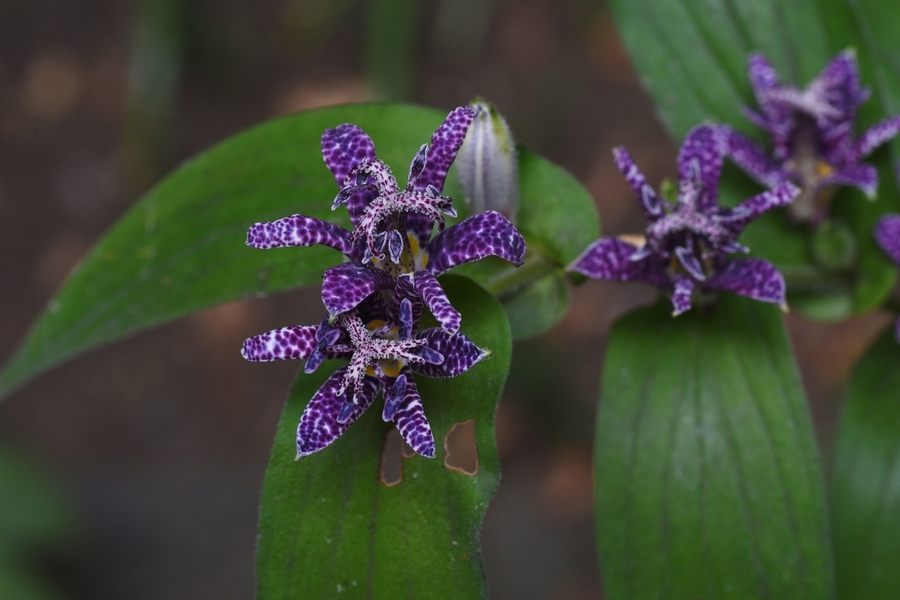
The Japanese toad lily is most often grown for its unusual flowers. Its beautiful flowers that start with J have six tepals and purple splotches that resemble a toad’s markings. It grows best in shade in moist, well-draining soil. It does not reproduce through rhizomes but through its seeds.
- Type: Herbaceous perennial
- Water: Average to wet
- Bloom Color: Pastel purple and white with dark purple splotching
- Hardiness Zone(s): 4 to 8
- Bloom Time: Summer
- Mature Height (feet): 2 to 3
- Exposure: Full shade to part shade
- Uses: Shaded borders and rain gardens
17. Japanese tree lilac (Syringa reticulata)
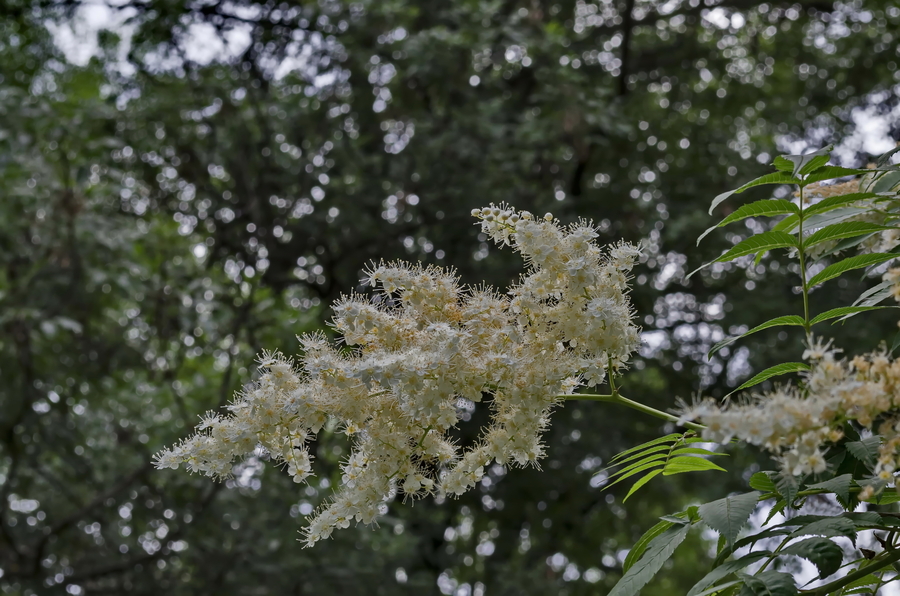
This type of lilac is a tall grower and has creamy white flowers. It is native to northern China and Japan and grows best in full sun in well-drained soils. It needs good air circulation and doesn’t usually develop any major diseases.
- Type: Tree
- Water: Average
- Bloom Color: Creamy white
- Hardiness Zone(s): 3 to 7
- Bloom Time: Summer
- Mature Height (feet): 20 to 30
- Exposure: Full sun
- Uses: Borders, containers
18. Jasione (Jasione spp.)
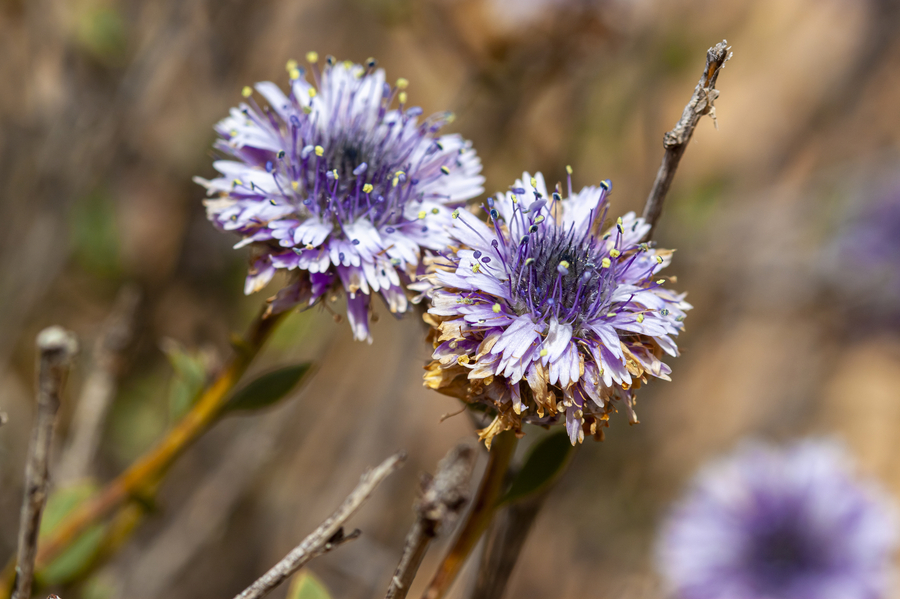
This plant grows in coastal, rocky areas and in grasslands. It does best in sandy, free-draining soil and has round flowers. Most notably, jasione has purple and blue bracts that attract insects. This easy-to-grow plant and its beautiful flowers that start with J will thrive in ideal growing conditions.
- Type: Herbaceous perennial
- Water: Average to dry
- Bloom Color: Blue
- Hardiness Zone(s): 4 to 9
- Bloom Time: Summer
- Mature Height (feet): Up to 2
- Exposure: Full sun to part sun
- Uses: Meadows, borders, sandy parts of the garden
19. Jasmine (Jasminum officinale)
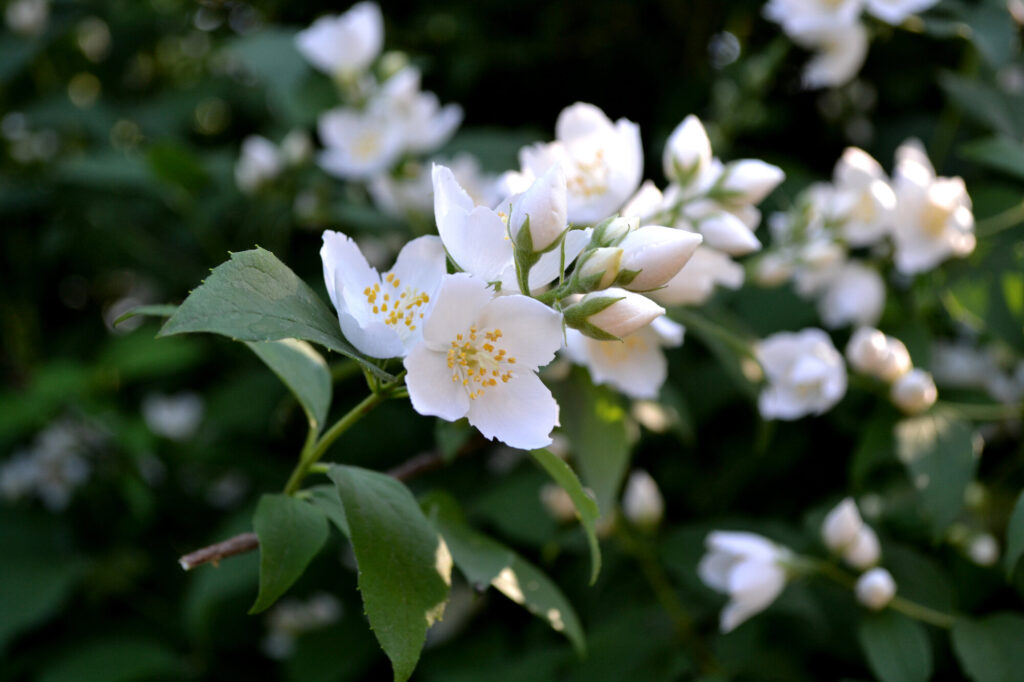
Jasmine is native to Asia Minor, China, and the Himalayas. It is a popular plant that grows in three US zones and is often grown as an indoor plant. Frequent pinching off will maintain desired growth habits. After blooming, it can be pruned back hard. It can also be repotted after blooming.
- Type: Vine
- Water: Average
- Bloom Color: White to light pink
- Hardiness Zone(s): 7 to 10
- Bloom Time: Seasonal
- Mature Height (feet): 20 to 30
- Exposure: Full sun to part shade
- Uses: Containers, hedges
20. Jerusalem artichoke (Helianthus tuberosus)
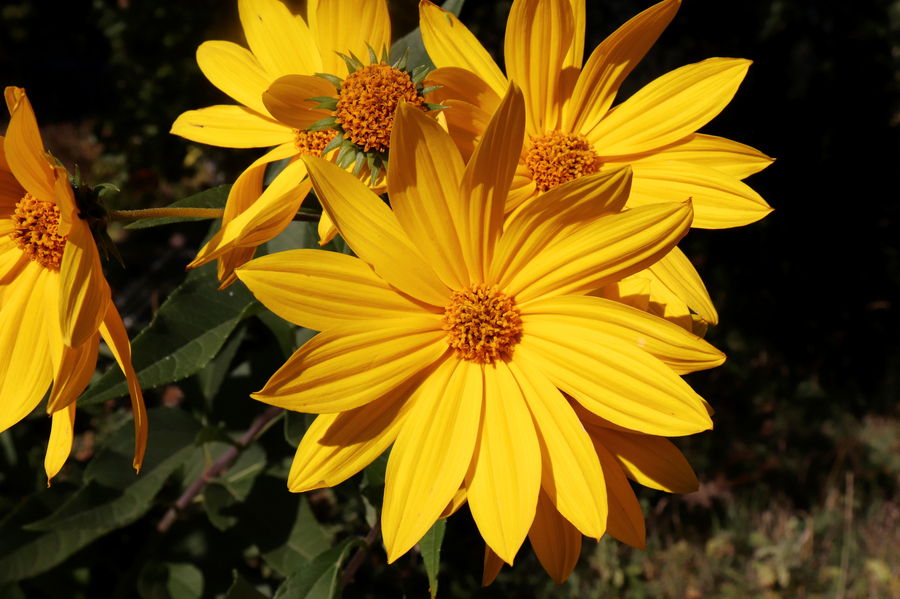
Jerusalem artichoke is part of the sunflower family. It does well in poor soils and can tolerate rocky and sandy conditions. It is sensitive to strong winds, so needs some protection from drastic weather. Seeds of this plant are eaten by songbirds, so don’t deadhead the flowers!
- Type: Herbaceous perennial
- Water: Average to dry
- Bloom Color: Yellow
- Hardiness Zone(s): 3 to 9
- Bloom Time: Late summer
- Mature Height (feet): up to 10
- Exposure: Full sun to part shade
- Uses: Borders and meadows
21. Jewelweed (Impatiens capensis)
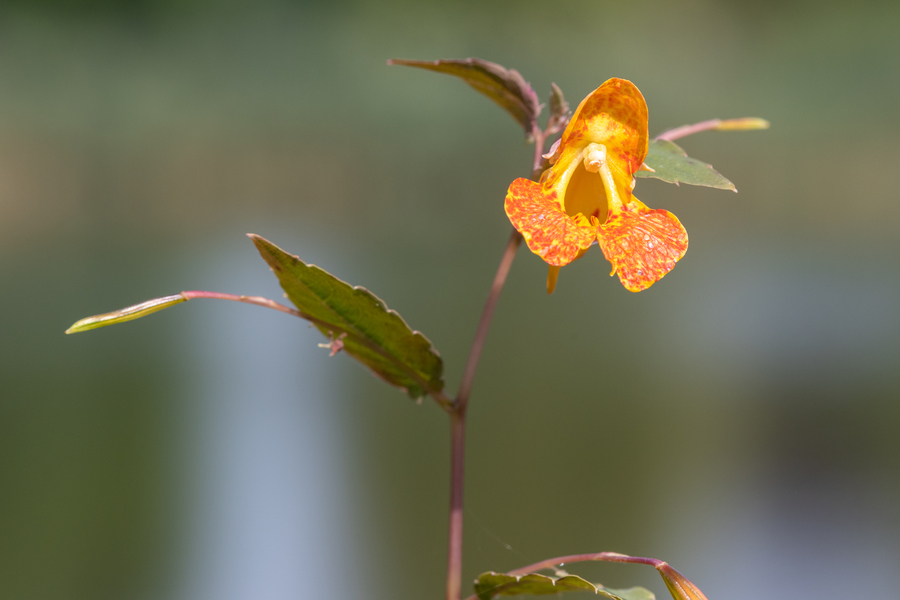
The iconic jewelweed is a flower that starts with J which is most known for its exploding seed heads. This feature has an evolutionary benefit in that it independently spreads seeds further than other plants. After the rain, raindrops glisten on its foliage, that’s why it’s called jewelweed. In ideal conditions, this North American native grows aggressively.
- Type: Annual
- Water: Average to moist
- Bloom Color: Orange
- Growing Zone(s): 2 to 11
- Bloom Time: Summer
- Mature Height (feet): 2 to 4
- Exposure: Full sun to part shade
- Uses: Woodland borders, rain gardens
22. Jewel of Desert Peridot (Delosperma cooperi)
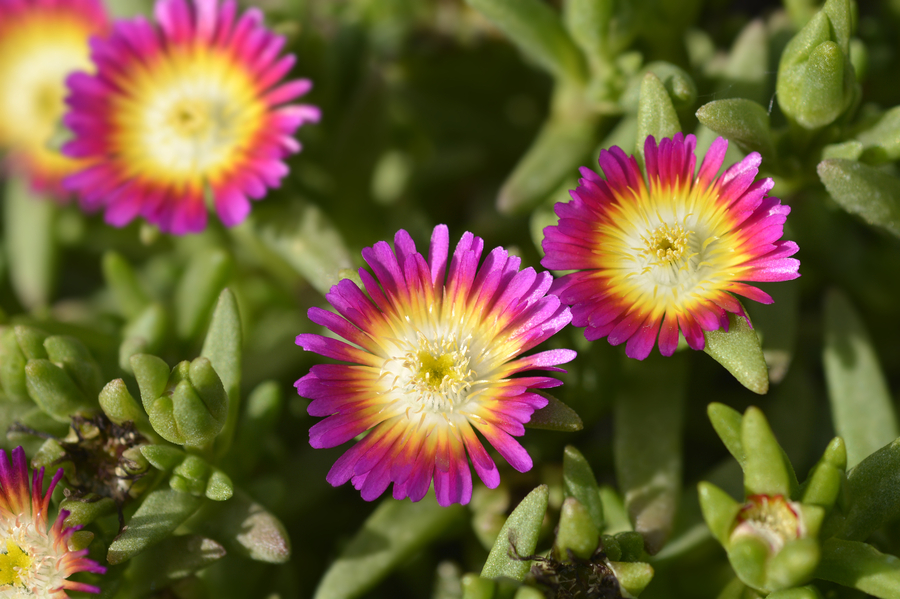
These fun, daisy-like flowers that start with J are native to South Africa. They thrive in full sun and sandy soils with excellent drainage. They are a vigorous grower and do well as a ground cover. But they need to be protected from harsh winter conditions although they are easy to grow.
- Type: Herbaceous perennial
- Water: Average
- Bloom Color: Bright yellow petals with white centers
- Hardiness Zone(s): 5 to 10
- Bloom Time: Summer
- Mature Height (inches): up to 6
- Exposure: Full sun
- Uses: Borders, as a groundcover, and in containers
23. Joe pye weed (Eutrochium purpureum)
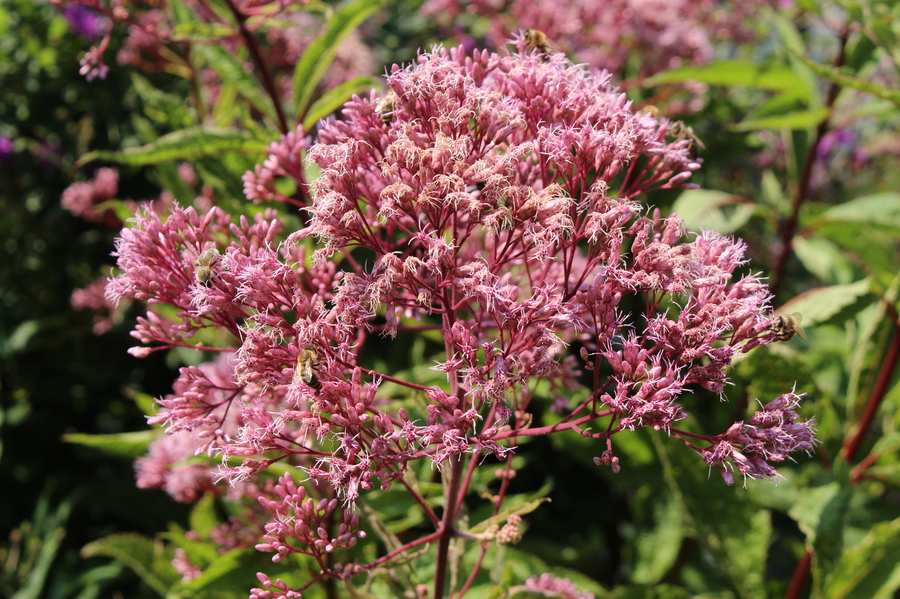
This North American native grows near woodlands and on slopes. It can tolerate a range of soils and is loved by pollinators, especially butterflies. While it can grow up to seven feet, it has a drooping habit making its spread wider.
- Type: Herbaceous perennial
- Water: Average to moist
- Bloom Color: Mauve
- Hardiness Zone(s): 4 to 9
- Bloom Time: Late summer
- Mature Height (feet): 5 to 7
- Exposure: Full sun to part shade
- Uses: Backgrounds, cottage gardens, and borders
24. Johnny jump-up (Viola spp.)
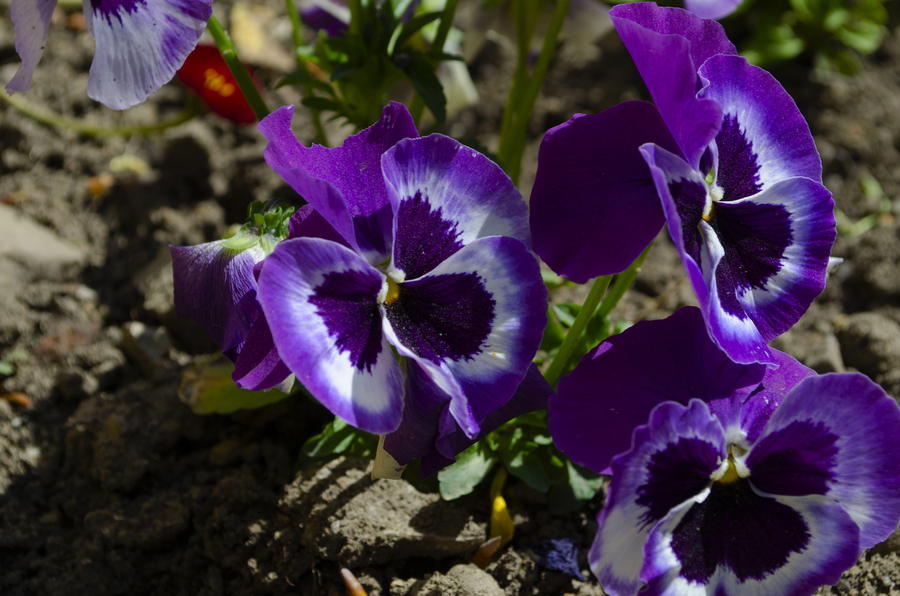
The classic and timeless pansy is also referred to as the johnny jump-up. These plants are short-lived perennials and are most often grown as annuals. Spent flowers can be deadheaded to encourage prolonged blooming. They come in a variety of colors and are one of the most popular plants in the US. Though ‘pansy’ is a moniker for weak, they are fairly tough plants to grow.
- Type: Herbaceous perennial
- Water: Average in well-draining soil
- Bloom Color: All colors
- Hardiness Zone(s): 6 to 10
- Bloom Time: Spring to early summer
- Mature Height (inches): up to 8
- Exposure: Full sun to part shade
- Uses: Borders, containers
25. Joseph’s coat (Amaranthus tricolor)
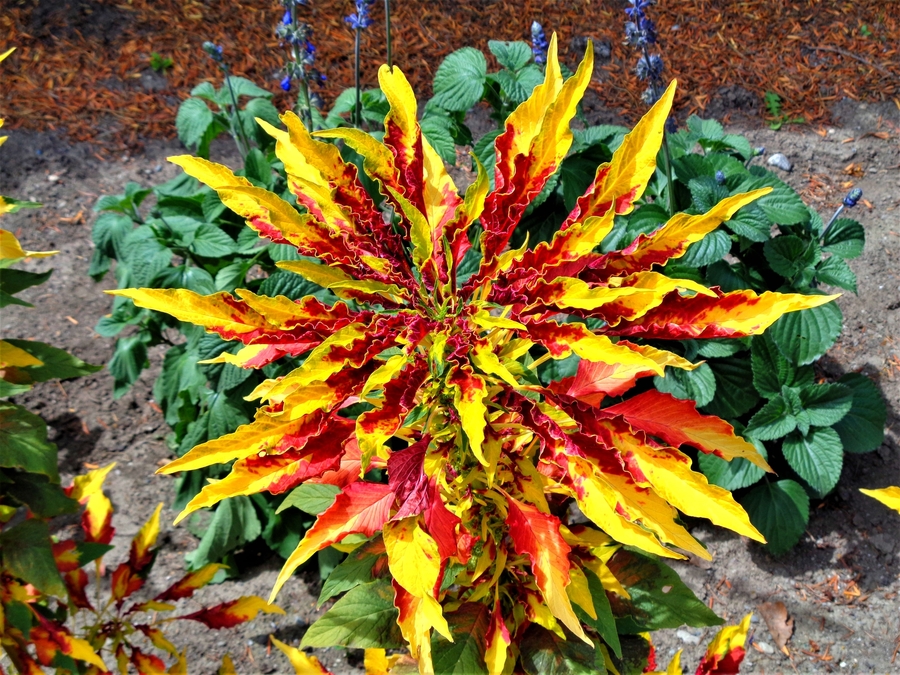
Joseph’s coat is native to tropical Asia. It is not grown for its flower, rather it is grown for its almost unbelievable foliage. Its leaves show off shades of vibrant red and stark yellow. It is propagated by seed and can be started indoors one and a half months before the last frost of spring.
- Type: Annual
- Water: Average
- Foliage Color: Green to red
- Hardiness Zone(s): 2 to 11
- Mature Height (feet): 2 to 4
- Exposure: Full sun to part shade
- Uses: Groundcover, front of borders
26. Jovellana (Jovellana violacea)
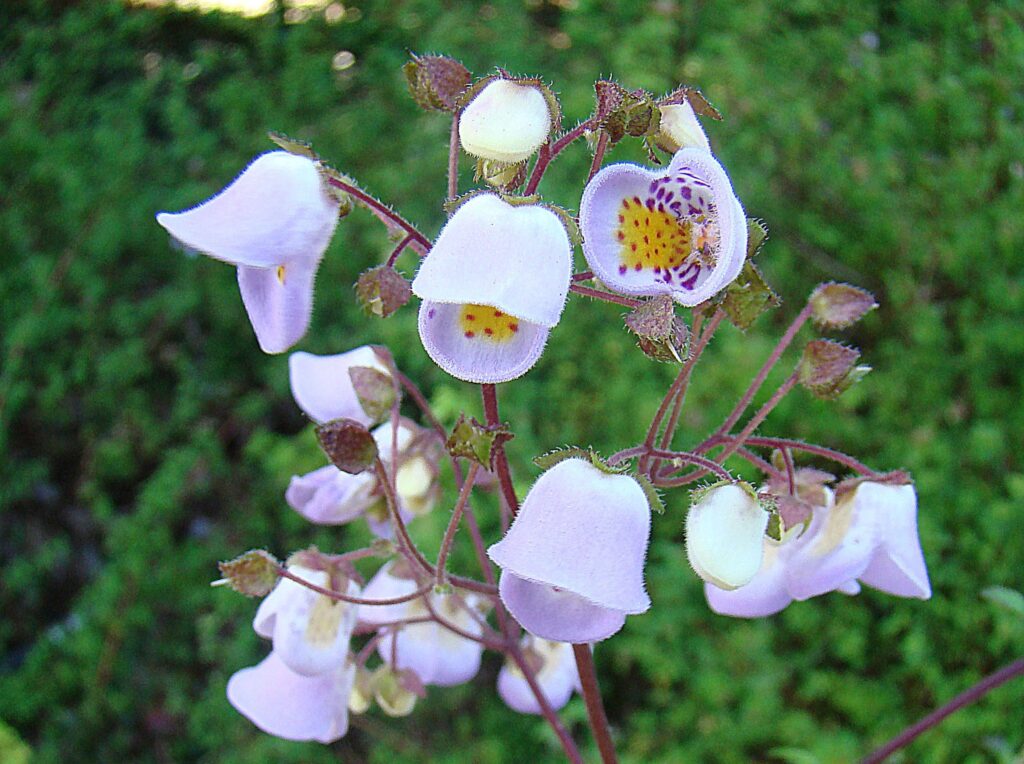
The jovellana is native to Chile and New Zealand. It can be propagated by seeds or by cuttings during summer. It is a charming plant with delicate, detailed flowers that start with the letter J. It can be cut back to a few inches above the ground in early spring before the new growth appears.
- Type: Herbaceous perennial
- Water: Average
- Bloom Color: White, purple with yellow centers
- Hardiness Zone(s): 8 to 10
- Bloom Time: Summer
- Mature Height (feet): up to 2
- Exposure: Full sun
- Uses: Containers, borders, sunny spots in the garden
27. Joyweed (Alternanthera brasiliana)
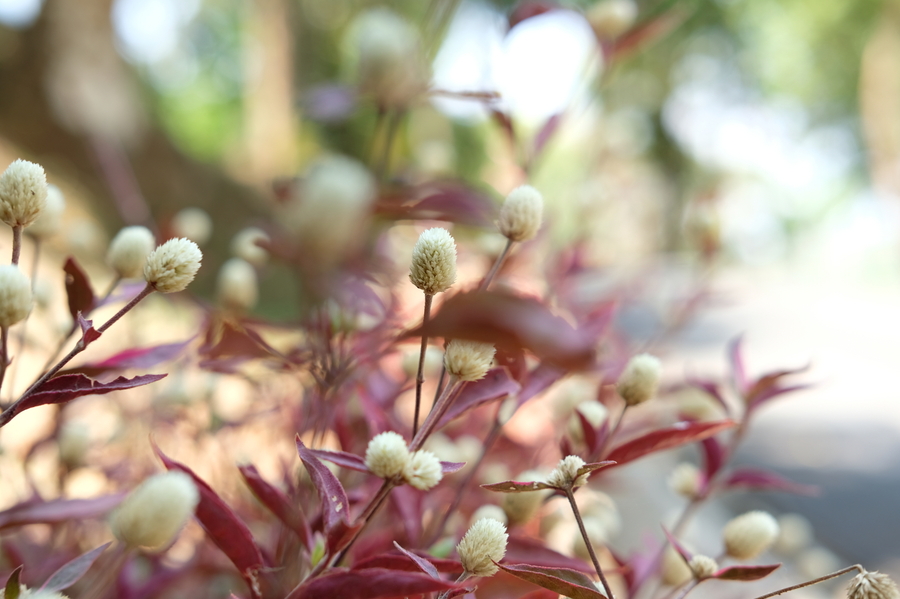
Joyweed or Brazillian joyweed is native to South and Central America. It is most often grown for its showy, purple foliage. It adds interest to borders with its color and texture. It is invasive in some climates, so proceed with caution when planting!
- Type: Annual
- Water: Average
- Bloom Color: White
- Hardiness Zone(s): 9 to 11
- Bloom Time: Spring
- Mature Height (feet): up to 1½
- Exposure: Full sun to part shade
- Uses: Borders, containers
28. Jungle flame (Ixora coccinea)
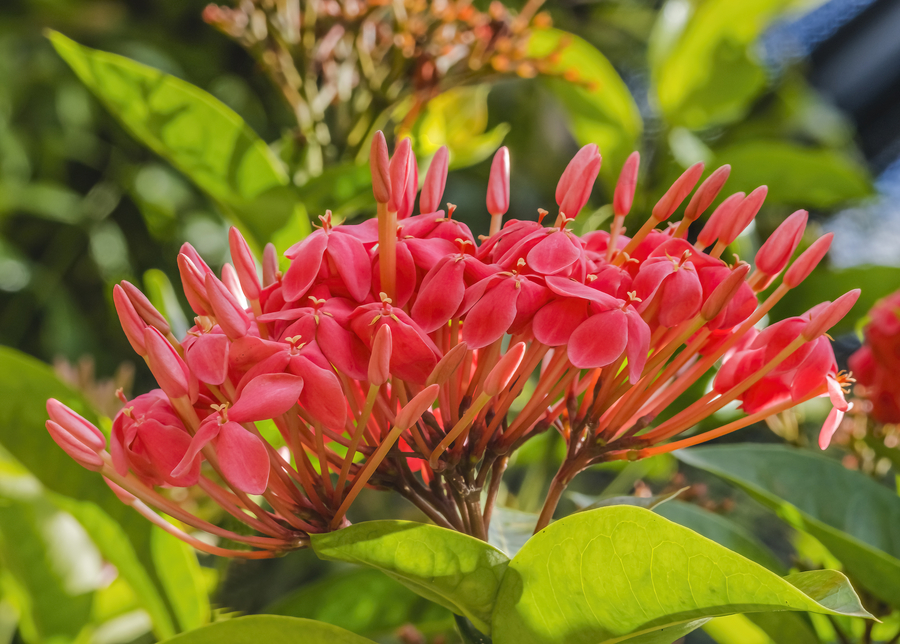
The jungle flame is native to tropical Asia and has a bright red flower. It grows in warmer climates where it provides year-round interest and color. It cannot tolerate temperatures below fifty degrees Fahrenheit. After flowering, the jungle flame produces dark drupes.
- Type: Broadleaf evergreen
- Water: Average
- Bloom Color: Bright red
- Hardiness Zone(s): 9 to 11
- Bloom Time: Ever-blooming
- Mature Height (feet): 4 to 6
- Exposure: Full sun
- Uses: Borders, containers
Frequently Asked Questions (FAQ) About Flowers that Start with J
What are the most common flowers that start with J?
The most common flowers that start with J are jasmine, johnny jump-up, jewelweed, Japanese iris, Japanese cherry blossom, Japanese anemone, and jade plant.
Are there any purple flowers that start with the letter J?
There are a few purple flowers that start with J. Some purple flowers that start with letter J include Jacaranda mimosifolia, jack-in-the-pulpit, jackbean, Jacob’s ladder, Japanese bellflower, Japanese iris, Japanese toad lily, joe pye weed, and johnny jump-up.
What are some spring flowers that start with a J?
Jaborosa, jack-in-the-pulpit, Japanese cherry blossom, Japanese iris, Japanese kerria, johnny jump-up, and joyweed are all spring flowers that start with a J.
Is there a bush with red flowers that starts with J?
A plant with red flowers that start with J that did not make the list was the Japanese barberry because it is such a destructive invasive. Another non-invasive bush-like plant with striking foliage is Joseph’s coat.
White filler flowers that start with J?
Some white filler flowers that start with J are jasmine, jaborosa, Japanese cherry blossom, Japanese anemone, Japanese iris, Japanese rose, Japanese tree lilac, and joyweed.
Are there tropical flowers that start with J?
The tropical flowers that start with the letter J include the following: jaborosa, jackfruit, jackbean, jambosa, jewel of desert Peridot, Joseph’s coat, joyweed, and jungle flame.
Image credit: Depositphotos, Flickr, & Wikimedia
